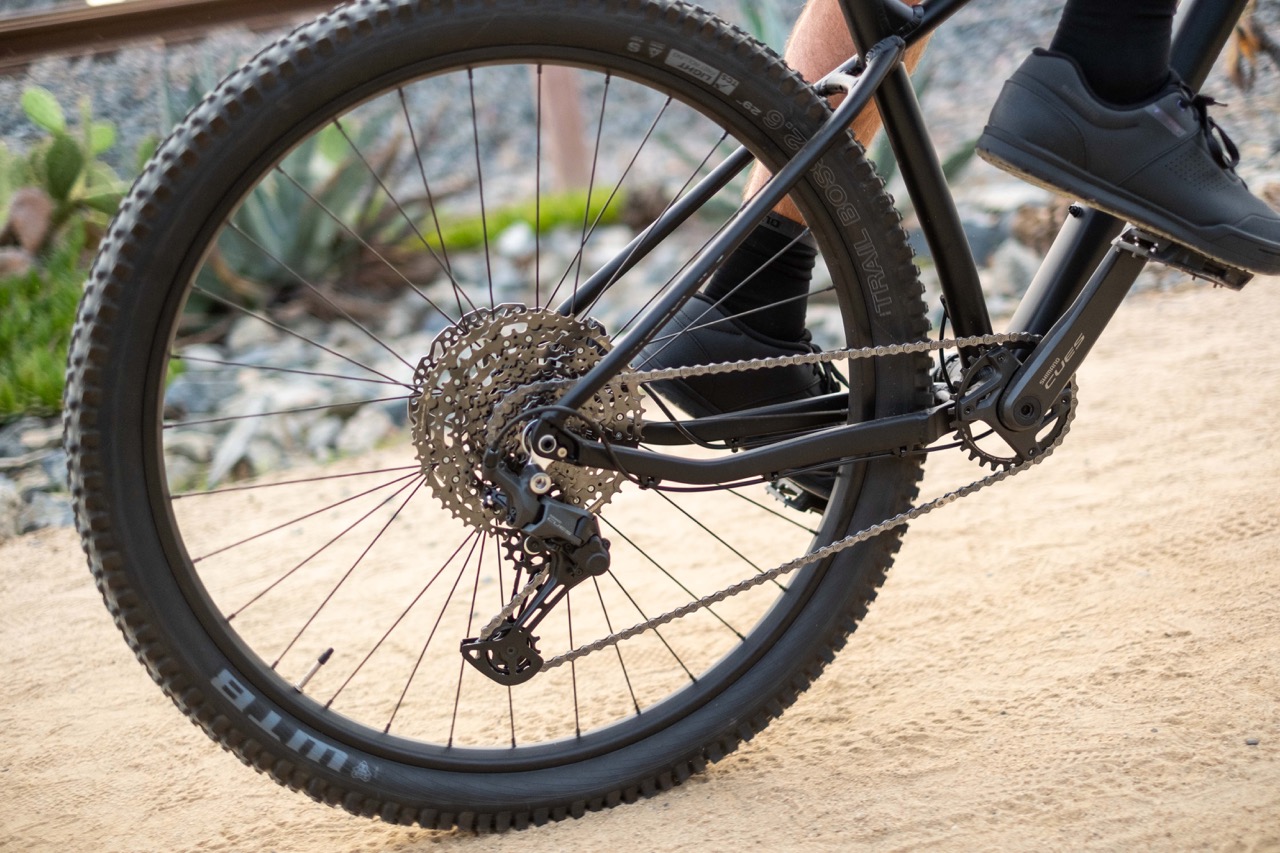For the longest time, if you wanted modern drivetrain technology on the cheap, you had to wait. As in, you would have to wait for that race technology to trickle down to the more affordable component groups — which could take years. Or even decades.
Shimano’s new CUES ecosystem is the result of thinking, “maybe we could engineer something better now,“ rather than waiting for the latest tech to reach the point where it’s considered affordable. More importantly, Shimano points out that its new group is designed for the actual use of mid-tier bikes rather than obsolete race tech, which means a lower cost of entry for real MTB performance.
CUES, or Create Unique Experiences, is Shimano’s answer to an all-new mid-tier lineup that’s set to replace multiple existing groups. Gone are the Alivio, Acera, Altus, and the 10- and 11-speed Deore groups, with Shimano CUES rising up to take their place. (Shimano notes it is not cutting support for legacy groups.)
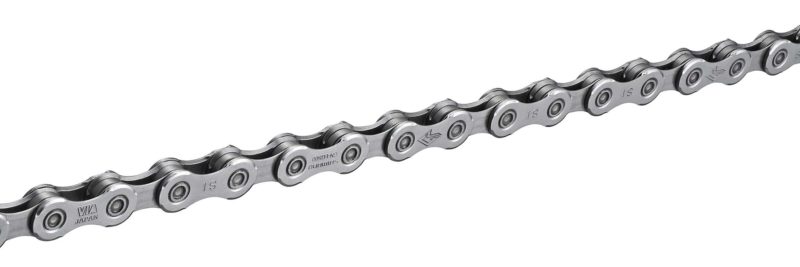
9, 10, and 11 Speeds on a Single Chain
How will a single component family replace multiple separate groups? It all comes down to a single chain. Even though CUES will be offered in 9-, 10-, and 11-speed variants, all of the CUES groups will use the same 11-speed chains (better still, the groups use any existing 11-speed chains). Why 11-speed? Shimano states that while 11- and 12-speed chains are about the same durability-wise, 11-speed chains are more durable than existing 8-, 9-, and 10-speed chains. There’s no specific chain for the group; any Shimano 11-speed chain will be compatible. The cheapest option will be the LG500 chain, listed at $22.99.
Using a single chain also means all of the cranksets are intercompatible. Technically, all of the derailleurs are intercompatible as well, though rear derailleurs will be limited by their cassette capacity. Those cassettes all feature the same cog thickness and consistent spacing so all of the shifters will have the same pull ratio.
This unheard-of level of compatibility will mean dealers will have fewer part numbers to stock, and consumers will have more options when it comes to finding replacement parts. On vacation and broke your 9-speed shifter but can’t find a replacement? Buy an 11-speed shifter and limit out the last two clicks. Then down the road, you could buy an 11-speed cassette and possibly a new derailleur and you have an all-new 11-speed setup!
LinkGlide Technology Expands
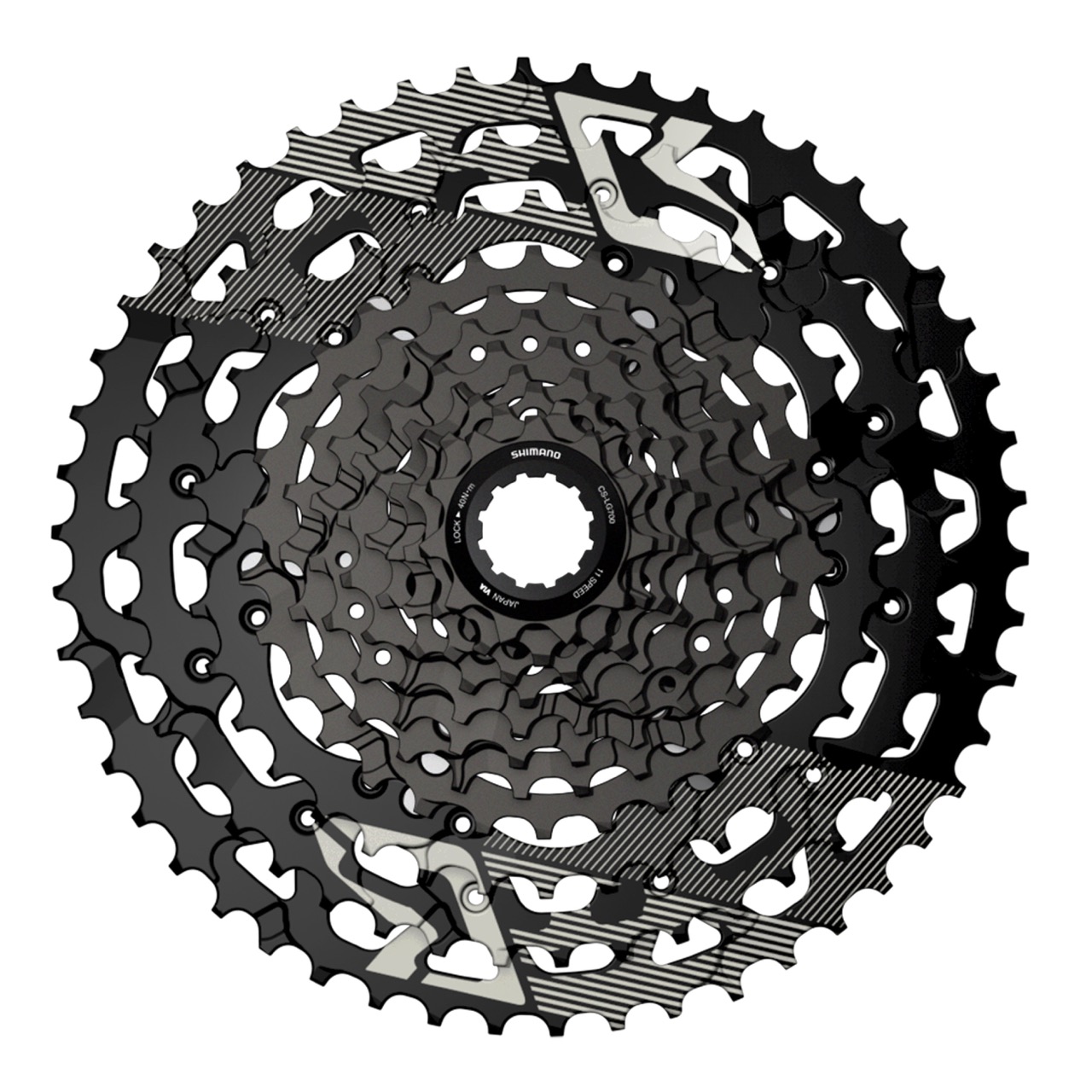
CUES is also based on Shimano’s relatively new LinkGlide technology, which was introduced as a 3x more durable option than HyperGlide+. When LinkGlide was introduced, it was novel that there would be a more durable XT drivetrain option, but we didn’t really get the full picture until now. LinkGlide will still be offered at the XT level, but more importantly, it will create a much more durable mid-tier drivetrain that doesn’t care how you shift.
Unlike some more expensive groups, LinkGlide doesn’t require a special shifting technique or care when shifting. Shimano claims there’s no need to let up during shifting, which makes the entire system great for beginners, or any riders wanting a simpler system.
Shimano was also sure to point out that the original LG600 cassette that launched with the original LinkGlide XT group was admittedly quite heavy. The new LG700, which replaces it, is claimed to be considerably lighter. Not only that but the less expensive LG400 cassette is also lighter than the LG600.
Compatible With Other Chains
Another interesting design feature of LinkGlide is: All of the shifting technology is built into the cassette, not the chain. Why does that matter? While Shimano would prefer that bike manufacturers spec all Shimano components, it’s realistic. It knows that less expensive chains or cranksets will be subbed in to cut costs. But even if you get a bike without a Shimano chain, the CUES cassettes and derailleurs will still shift the same.
CUES will also offer an easier bike-buying experience for both the bike shops and the consumer. There’s no longer a need to explain all the different groups, instead, it’s just 9-speed, 10-speed, or 11-speed.

One of the big motivations behind CUES was for Shimano to offer bike brands an affordable 1x drivetrain option for mountain bikes, which it achieved. However, there are still front derailleur options if needed. Here too, Shimano is improving compatibility. There were previously three different cable pull ratios for front derailleurs; CUES unifies that into a single pull.
Shimano CUES Group Hierarchy
While all of the CUES components fall under the same family and share the same chain, there are different component levels. You’ll most likely find these groups on complete bikes, but aftermarket parts will be available for custom builds or replacements. As Shimano puts it, “choose the gear range you need, and the features that you want.”
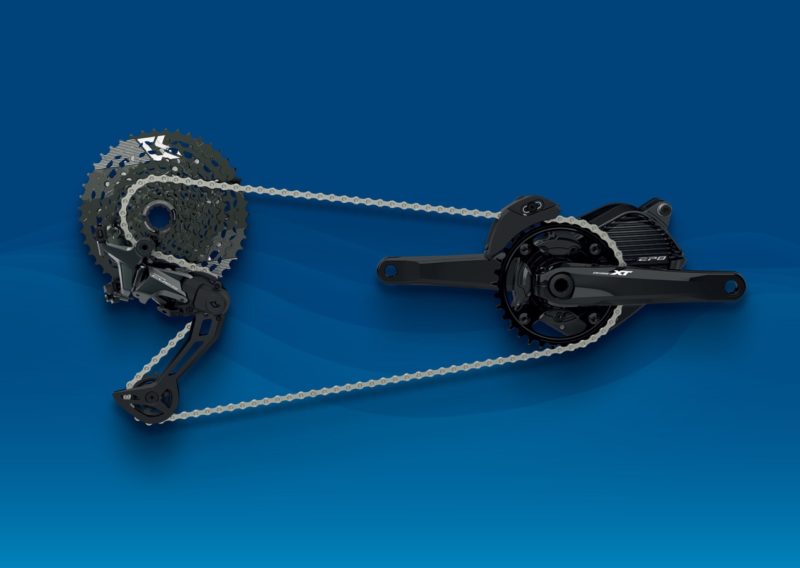
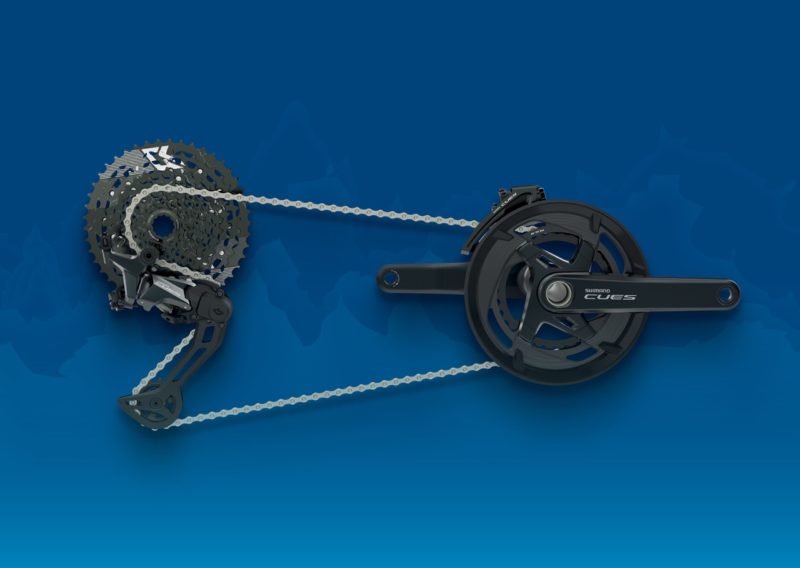
U8000 11-Speed
This is the line’s top-end 11-speed group, which likely won’t be seen much in North America. Essentially the new XT Trekking group, it includes the only brake in the CUES lineup that’s a replacement for the T8000 Trekking brake. It has polished highlights that add to the high-end appearance of the group.
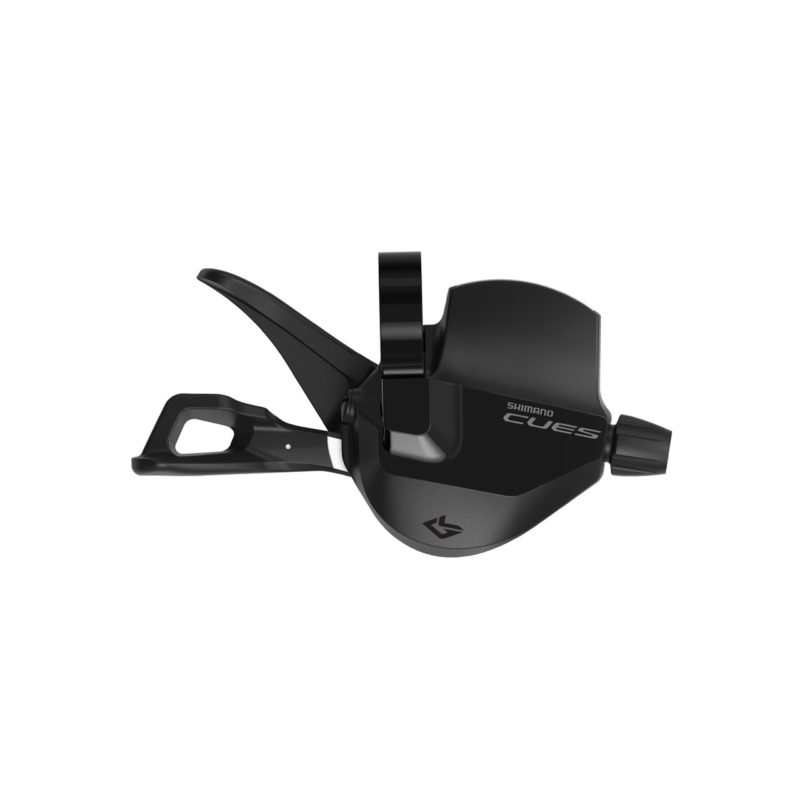
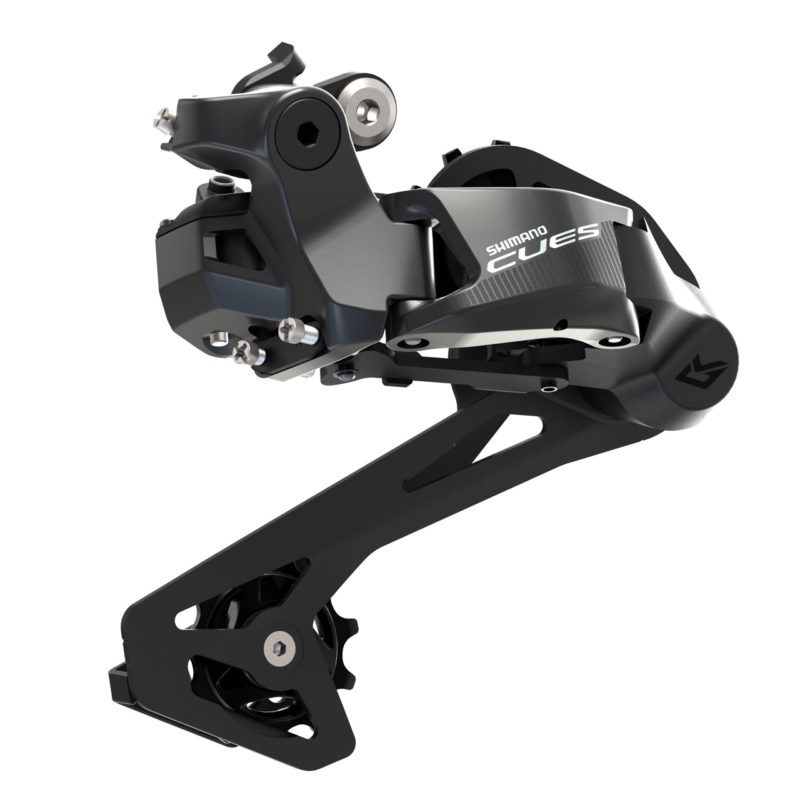
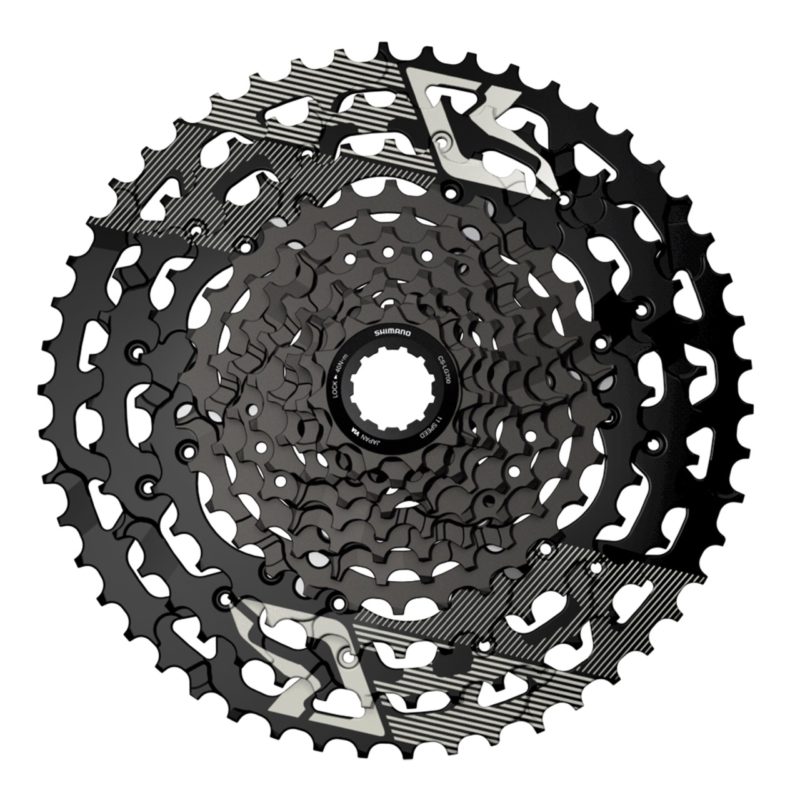
U6000 11-Speed
We’ll see more of what Shimano calls its “benchmark 11-speed series.” This group can be used for everyday fun bike rides to “enthusiastic trail riding.” At this level, you’ll still find a rear derailleur with a clutch and an option for a two-way release shifter.
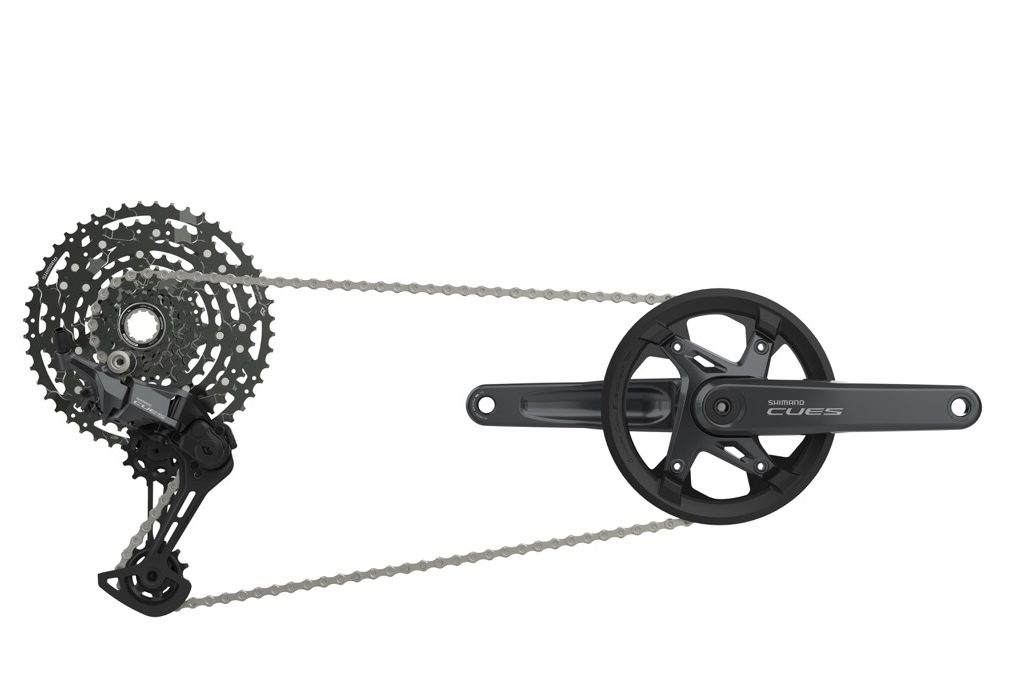
U6000 10-Speed
This series can be used in the same way as the U6000 11-speed series, but with 10-speeds. As mentioned, this is simply the same chain but with a cassette that features one less cog and a 10-speed shifter.
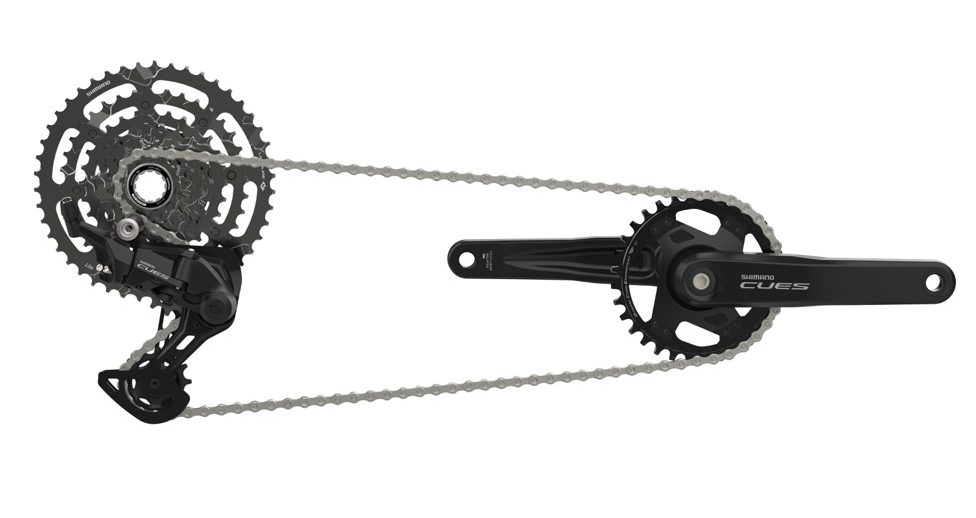
U4000 9-Speed
The 9-speed U4000 is the new entry-level series. This series can cover a wide spectrum of bike activities, from the enjoyable trail ride to the casual everyday jaunt. The rear derailleur does not feature a clutch but does have a stronger derailleur spring and “clever architecture” to provide chain retention. The biggest difference is that this will be louder than a clutched derailleur but still offers improved chain retention.
How Much Does Shimano CUES Cost?
While most of these groups will be sold as complete bikes, Shimano gave us sample pricing on a few options. At the top end, a Shimano CUES U8000 1×11 group with crank and bottom bracket will total $451.94 HyperGlide+ — not bad when you consider that’s less than some cassettes these days. A 1×11 U8000 group without a crank or cassette drops to around $288.96, which puts it well under XT LinkGlide 1×11 at $361.96.
The pricing continues to drop with a U6000 1×11 group without crank or BB priced at $213.96, a U6000 1×10 group without crank or BB listed at $186.96, and the bottom U4000 1×9 group without crank or BB selling for just $150.96. These sample group prices include the widest range 1x option for each level without brakes.
Will There Be More CUES Groups in the Future?
Regular readers may recall when Shimano already launched the CUES group last year. Focused on e-bike Di2 drivetrains with free and auto shifting, those parts will stick around and join the mountain bike, hybrid, and trekking groups launched today. When asked if we’ll see CUES launch for the road and gravel side as well, Shimano stated it has built an ecosystem that’s open for future products, but currently has no comments on anything drop-bar related.
